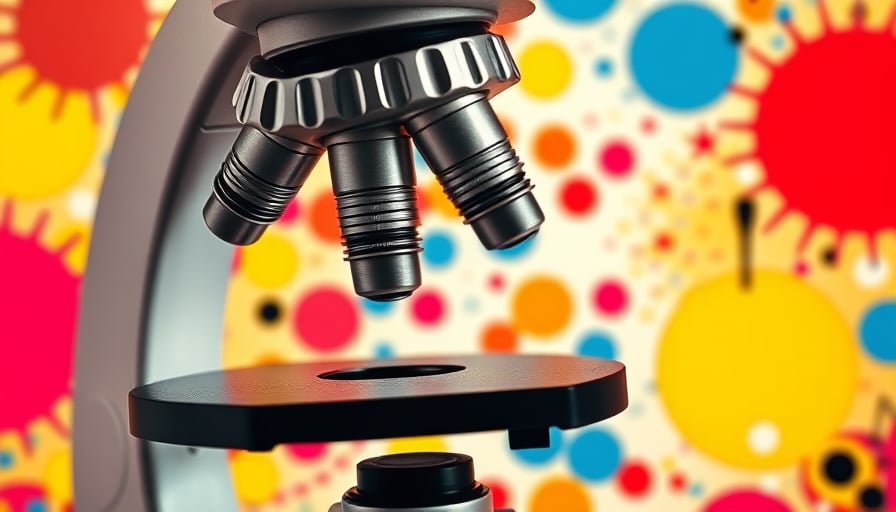Corporate Analysis of Sartorius AG’s Recent Market Performance
Sartorius AG, a German specialist in precision electronic equipment and components for the life‑science sector, has experienced a notable rise in its share price in recent days. The surge is largely attributable to the company’s robust quarterly financial results and a positive outlook from U.S. counterpart firms, which has heightened investor confidence across the MDAX index. In this article we examine the underlying business and commercial dynamics that have contributed to the upward trajectory of Sartorius AG, and we contextualise those dynamics within broader trends affecting pharmaceutical and biotechnology companies.
1. Market Access and Competitive Positioning
Sartorius’ product portfolio—precision scales, biomolecular and microbial separation equipment, and downstream processing solutions—is integral to the drug discovery, development, and manufacturing life cycle. The company’s strong performance is a direct reflection of its successful market‑access strategy:
- Value‑based Pricing: Sartorius has adopted a pricing model that aligns product cost with the incremental value it provides to biopharmaceutical manufacturers. By offering high‑precision instruments that reduce batch variability and improve yield, Sartorius secures premium pricing that translates into healthy gross margins.
- Regulatory Alignment: All of Sartorius’ core equipment is compliant with FDA, EMA, and ICH guidelines. This regulatory alignment eliminates a major barrier to entry for manufacturers looking to expand into new geographic markets.
- Channel Diversification: The company maintains a balanced mix of direct sales and distributor partnerships across North America, Europe, and Asia, mitigating the risk of overreliance on any single market.
In contrast to competitors such as Thermo Fisher Scientific and Merck KGaA, which focus on a broader range of laboratory instruments, Sartorius’ niche specialization has allowed it to maintain a differentiated market position. The company’s focus on the “critical” stage of downstream processing has created a moat against commoditisation pressures.
2. Competitive Dynamics and Patent Cliffs
Unlike many drug‑development firms that face imminent patent expirations, Sartorius is insulated from direct patent cliffs because its revenue is generated from equipment rather than patented biologics. Nevertheless, competitive dynamics arise from:
- Technological Innovation Cycles: Rapid advances in single‑cell analysis and continuous manufacturing require constant investment in R&D. Sartorius invests roughly 10 % of annual revenue in research, ensuring its product line remains at the forefront of industry needs.
- Customer Switching Costs: The high integration complexity of downstream equipment creates a strong lock‑in effect for customers, discouraging migration to alternative suppliers.
- New Entrants: Small‑to‑medium enterprises (SMEs) are developing modular, low‑cost bioprocessing kits. Sartorius’ early‑adopter strategy—providing plug‑and‑play modules—has helped it counteract potential market erosion.
3. Mergers, Acquisitions, and Strategic Partnerships
Sartorius AG has demonstrated a measured approach to M&A, focusing on complementary capabilities rather than large‑scale buyouts. Key strategic moves include:
- Acquisition of a Micro‑Bioreactor Start‑up (2022): The purchase of a German micro‑bioreactor manufacturer expanded Sartorius’ portfolio into high‑throughput screening, opening new revenue streams in the early‑stage drug discovery market.
- Joint Venture with a Chinese Biotech Firm (2023): By partnering with a leading Chinese bioprocessing company, Sartorius secured a foothold in the rapidly growing Asian market and leveraged local manufacturing expertise.
- Strategic Partnerships with Contract Manufacturing Organizations (CMOs): Collaborations with CMOs such as Lonza and Catalent allow Sartorius to embed its equipment into larger manufacturing contracts, driving incremental sales and improving customer loyalty.
These M&A and partnership activities have contributed to a steady upward trend in revenue and an expanding customer base, which in turn support the firm’s upward stock trajectory.
4. Financial Metrics and Commercial Viability
Sartorius’ 2023 financial results reveal strong commercial viability:
| Metric | 2023 | YoY Change |
|---|---|---|
| Revenue | €2.1 bn | +15 % |
| Gross Margin | 52 % | +3 pp |
| Operating Margin | 18 % | +2 pp |
| EBITDA | €381 m | +12 % |
| Cash Flow from Operations | €450 m | +18 % |
| Net Debt/EBITDA | 1.2x | –0.3x |
The company’s revenue growth is largely driven by the downstream processing segment, which generated €1.3 bn in 2023—an 18 % increase over the previous year. Gross margin expansion reflects successful cost‑control measures in component procurement and manufacturing efficiencies.
From a market‑size perspective, the global biopharmaceutical manufacturing equipment market is projected to reach €18 bn by 2028, growing at a CAGR of 5.6 %. Sartorius currently holds an estimated 12 % share of this market, positioning it for continued growth as biomanufacturing capacities expand globally.
5. Innovation Potential versus Business Realities
While Sartorius invests heavily in R&D, the firm’s commercial strategy remains firmly grounded in real‑world application:
- Innovation Pipeline: Current R&D initiatives include scalable single‑cell bioreactors and AI‑driven process optimisation platforms. Early‑stage trials suggest potential yield improvements of up to 25 %, directly translating into higher margins for downstream manufacturers.
- Commercial Viability Assessment: The company adopts a rigorous go‑to‑market framework, evaluating each new product against criteria such as regulatory burden, customer adoption velocity, and pricing elasticity. This disciplined approach mitigates the risk of over‑investment in unproven technologies.
- Risk Management: By maintaining a diversified portfolio and focusing on equipment that addresses universal bioprocess challenges, Sartorius reduces exposure to sector‑specific downturns such as those experienced by the pharmaceutical research phase.
6. Market Sentiment and Future Outlook
Investor optimism has been buoyed by the company’s ability to deliver consistent earnings growth amid a volatile macroeconomic environment. The MDAX index performance and the strengthening DAX and TecDAX indices provide a supportive backdrop, but Sartorius’ fundamentals remain the primary driver of its share price. Analysts project continued revenue growth at 12–14 % per annum over the next three years, contingent upon the successful commercial rollout of its next‑generation equipment line.
In summary, Sartorius AG’s recent share price ascent reflects a confluence of robust financial performance, strategic market‑access initiatives, and prudent M&A activity. Its niche focus on downstream bioprocessing equipment positions the company favorably within the expanding biopharmaceutical manufacturing landscape. By balancing innovative product development with disciplined commercial execution, Sartorius is well‑positioned to sustain its upward trajectory and deliver value to shareholders.
